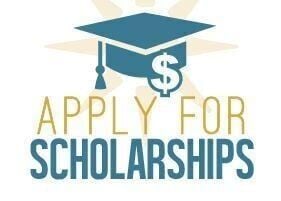
Ohio State University-Main Campus Tuition & Financial Aid
The tuition fee at Ohio State University-Main Campus is set at $12485, which is lower compared to the national average tuition rate of $47,999. This means that Ohio State University-Main Campus's tuition is either above or below what most students across the country typically pay.
In addition to tuition, there are various fees that students are required to pay. These fees are generally used to support campus resources and services such as library access, student fitness centers, technology, and other essential student services. The total amount a student pays for tuition and fees is often referred to as the "sticker price."
When assessing the total financial commitment for attending Ohio State University-Main Campus, it's important to consider not only the tuition but also additional costs. The total cost includes expenses like room and board (housing and meals), books, supplies, transportation, and personal expenses. For Ohio State University-Main Campus, the total estimated cost for attending is $26491.
To get a better understanding of what students will actually pay, it’s helpful to look at the net price. The net price is the average amount a student will pay after financial aid, scholarships, and other forms of assistance have been applied.
Ohio State University-Main Campus Admissions Requirements
-
Tuition and fees$12485(2023-24)
-
Net price for federal loan recipients (2021-2022)$17953
-
Net price by family income (2021-2022)Family Income Average Cost
-
$0-$30,000$6956
-
$30,001-$48,000$8402
-
$48,001-$75,000$13620
-
$75,001-$110,000$22528
-
$110,001+$26186
-
-
Food and Housing$14006(2023-24)
-
Go to this school's net price calculator
Ohio State University-Main Campus Admissions Stats
Financial aid refers to funding that students can use to pay for college and is generally awarded based on need or merit.
Financial aid helps students cover the costs of their education and is typically awarded based on financial need or academic achievement. At Ohio State University-Main Campus, the average need-based financial assistance awarded to first-year students is N/A, with some % of students receiving this form of aid in 2023. This aid is determined through the Free Application for Federal Student Aid (FAFSA), which evaluates your or your family’s financial situation.
In addition to need-based aid, students may also receive self-help aid, which includes federal loans and work-study programs.
Merit-based aid, awarded for academic accomplishments or special talents, is also available at Ohio State University-Main Campus.
-
Institution is G.I. Bill certifiedYes
-
Institution participates in Yellow Ribbon ProgramYes
-
Application Deadline for Financial AidNR
Student Loan Debt for Ohio State University-Main Campus
The amount of student loan debt you carry after graduation can significantly impact your financial future. Ideally, the total loan debt should not exceed your expected starting salary upon entering the workforce. At Ohio State University-Main Campus, the typical federal loan debt for graduates who completed their undergraduate degree is $19976. This figure represents the median amount borrowed by students who took out federal loans.
For those who took out federal loans, the estimated median monthly repayment for a 10-year term at a 5.05% interest rate is $211.78. It’s important to keep in mind that federal loans are a common source of student debt and often come with fixed repayment terms.
In addition to federal loans, some students may also rely on private loans. At Ohio State University-Main Campus, N/A% of graduates took out private loans. This additional debt can vary significantly, so it's important to consider both federal and private loans when planning for post-graduation finances.
-
Typical total federal loan debt after graduation$19976
-
Typical total federal loan debt among those who did not graduate$7000
-
Net price by family incomeFamily Income Average Cost
-
$0-$30,000$12643
-
$30,001-$75,000$13000
-
$75,001+$15984
-
-
Typical monthly loan payment$211.78
-
Undergraduates paying down their federal loan debt by family incomeFamily Income Average Cost
-
$0-$30,000$47.43
-
$30,001-$75,000$64.4
-
$75,001+$72.76
-
-
Average Total Indebtedness of 2024 Graduating ClassN/A
-
Graduating students who have borrowed (any loan type, 2023)85.64%
-
Graduating students who have borrowed (state loans, 2023)85.64%
-
Graduating students who have borrowed (private loans, 2023)N/A
Scholarships
Scholarships provide a form of financial assistance that doesn’t require repayment. Some scholarships are need-based, designed to support students facing financial challenges, while others are merit-based, recognizing accomplishments in academics, athletics, or other areas of excellence. Additional scholarships may be awarded for factors such as community engagement, distinctive talents, personal characteristics, cultural background, or even connections to a parent's workplace or military service. In some cases, students can secure enough scholarship funding to fully cover both tuition and living costs. Explore the available scholarships and grants offered by this University below.
-
Average Need-Based Scholarship or Grant Award (First-year Students)N/A
Jobs
Balancing a job alongside your studies can significantly reduce the financial strain of student loans. Many colleges provide opportunities for students to earn income on campus through work-study programs or part-time campus jobs. Depending on the school, students may either be directly placed into work-study roles or need to apply for openings, similar to a traditional job search process.
To find opportunities, start by exploring your college's online or physical job boards. You can also seek guidance from professors, peers, or career advisors to identify positions that align with your academic focus or personal passions.
-
Average need-based self-help aid award (first-year students)N/A
-
Students who received need-based self-help aid (first-year students)N/A




